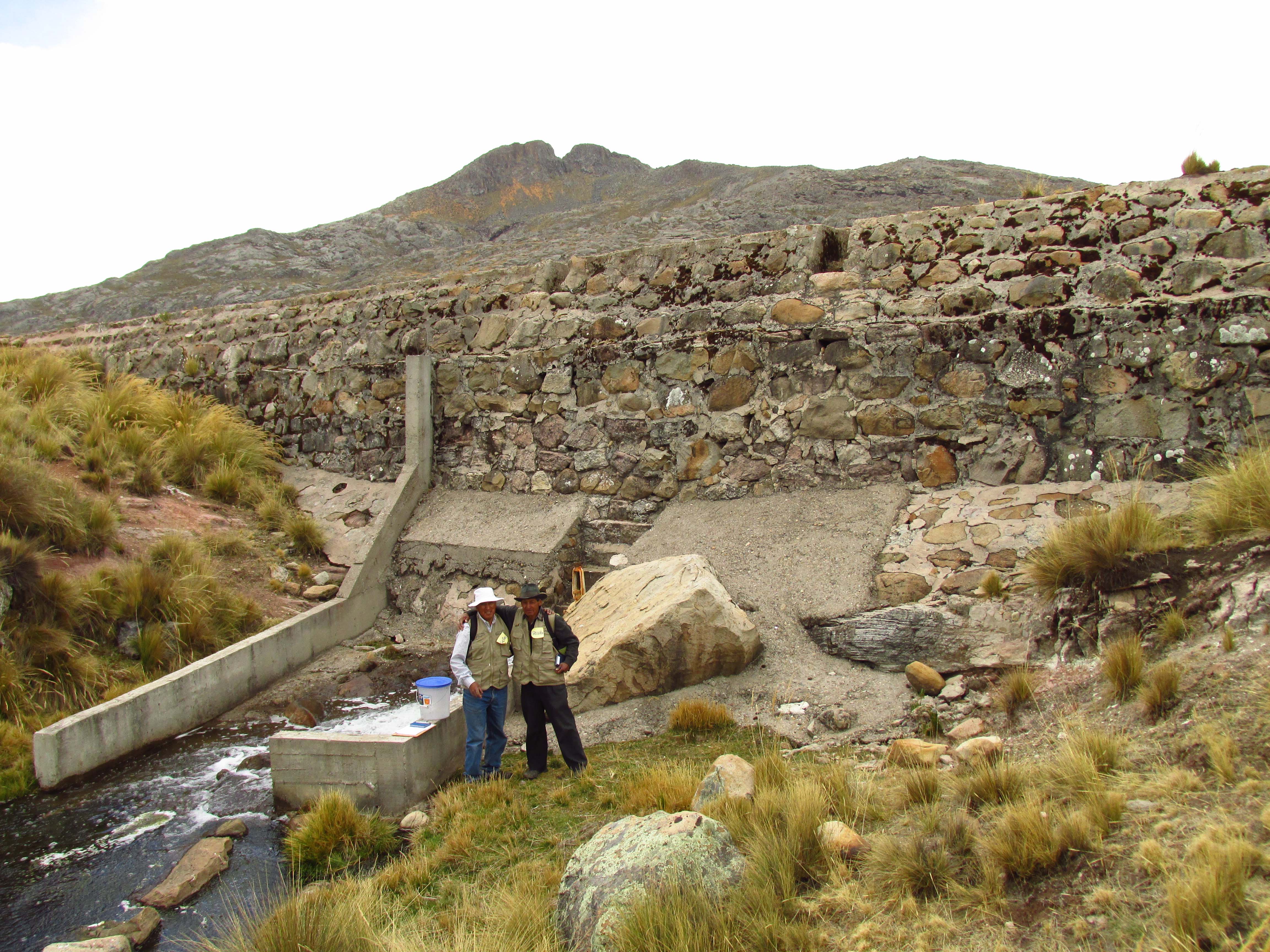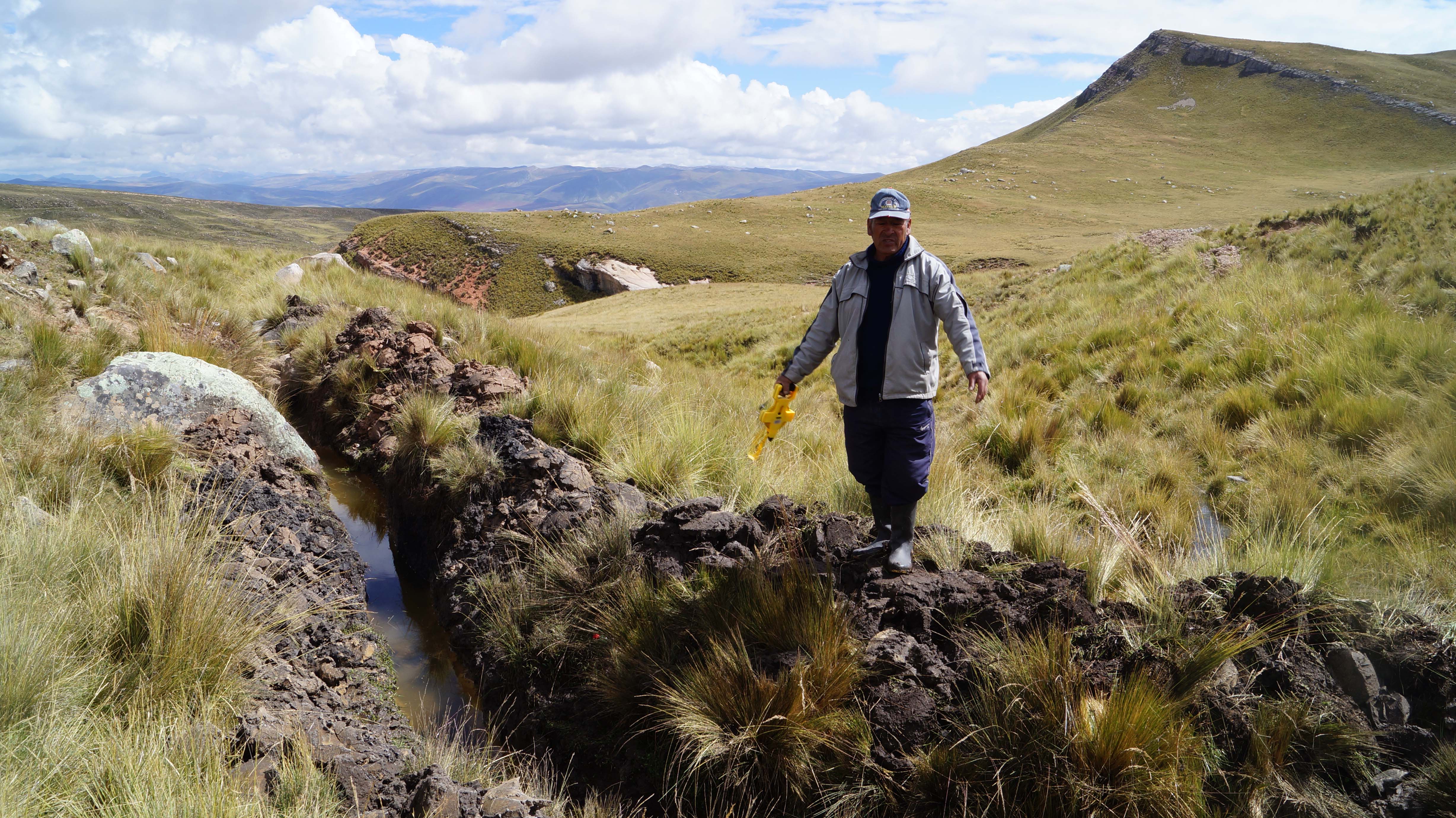


In the “Recovery of Technologies & Green-Gray Infrastructure” component, the Chacara dam was repaired and an old and unused water channel was rehabilitated. This allowed the recuperation of a network of ancient ditches in the communal farmland and in the high areas of Yanaututo and Pumapanca. These areas supply water to 560 ha of pasturelands (Hidroandes, 2015). In addition, the water is recharging temporary ponds and underground aquifers, that supply water to pits and springs in the lower part of the Jaramayo micro-catchment and the Cochas - Pachacayo sub-basin (Idem, 2015). A pilot area of 3 ha was fenced to protect pastures as they recover. It is monitored by the Landscape Reserve administration with support from the community. The community also contributed manpower to the activities in this component.
• Strong commitment from the community who contributed 45% of the cost through manpower, materials, equipment and machinery.
• Local researches linked the project with the communities.
• Commitment on the part of communal authorities.
• Sound relationship and coordinated work between the Mountain Institute and the Nor Yauyos-Cochas Landscape Reserve/ Peruvian Service of Natural Protected Areas (SERNANP).
• Steady support through a facilitator.
• Demand-oriented: The selection of measures should respond to local priorities and interests (being consistent with the EbA approach).
• Take into account the percentage of the population directly benefitting from (certain) ecosystem services as a selection criterion.
• Plan sufficient time for infrastructure measures, especially in areas of rugged topography and extreme climate, typical of high mountain areas, and in particular when local manpower/communal work is an integral part. Make sure the time required for the construction is in line with the timeline of the project.
• Reserve time for reflection during the implementation phase in order to take actions that enhance positive impacts.
• Seek commitment and support from local authorities/ leaders and involve them in key decision-making processes. Build partnerships with local governments, which will help to make the initiative sustainable.